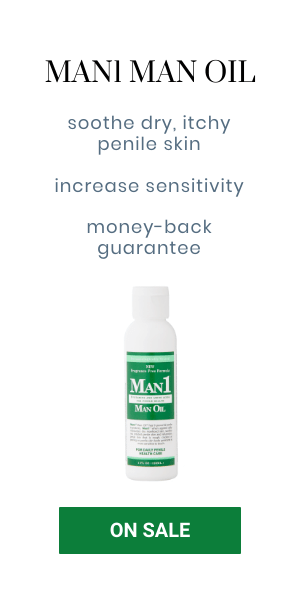Part of protecting penis health is practicing good sexual health. That includes taking steps to ensure adequate penis protection, such as wearing a condom when engaging in sex in a non-monogamous relationship in order to diminish the risk of both pregnancy and the spread of sexually transmitted infections (STIs). Since acquiring an STI can have devastating consequences for a man, maintaining penis protection is key – and it’s a responsibility no guy should take lightly. The question some men are now facing is this: does use of a penis seal provide adequate penis protection?
What is a penis seal?
It’s not a water mammal in the shape of penis, nor is it an envelope sticker emblazoned with a proud manhood. Rather, a penis seal is a piece of adhesive which fits across the tip of the penis and effectively seals off the meatus and urethra.
Why would a guy do such a thing? Well, the idea behind the penis seal is that it keeps semen from erupting forth from the penis, thus preventing sperm from making their way into the vagina and starting their search for an egg to fertilize. By the same token, if the semen is prevented from leaving the penis, it can’t come in contact with another person – and if that semen is tainted with an STI, therefore, the semen can’t spread the STI to another person.
By the way, there’s a name for the process of preventing semen from finding its way out of the penis: injaculation.
Does it work?
Unfortunately, there are a few things wrong with the reasoning behind the penis seal, especially when it comes to pregnancy prevention and STI prevention.
First, there’s the simple fact that the seal may not always work. If the seal is not properly sealed, semen will dribble out of the protected area. And in some cases, the force of ejaculation may be so strong that it lifts up a portion of the seal, allowing more of the semen to escape.
Second, there’s the fact that adequate penis protection (and protection of any partners) requires that the entire penis be covered. The penis seal is intended to really cover just the tip of the penis, leaving the vast majority of the organ uncovered and unprotected.
It’s possible that a penis seal might be of some use in the realm of oral sex. If a partner does not wish to swallow semen, the use of a seal might diminish the chance of that happening. However, it still leaves open some possibility for transmission of an STI.
Other issues
Beyond its questionable protective abilities, there are other things to consider with a penis seal.
Number one, the seal may prevent semen from flowing out, but it doesn’t prevent it from still entering the urethra. If a guy doesn’t flush the semen out soon after sex (usually by urinating and forcing the semen out), the semen will stay in the urethra, which is typically full of bacteria. And the mixture of semen and bacteria may not be the best thing for penis health.
Then there’s the simple matter of removing the seal. It’s a piece of adhesive, so it’s basically similar to taking packaging tape and wrapping it around the penis tip. Even when pulled off slowly, there is likely to be some pain – and the real likelihood of damaging the penis skin through peeling some of it off.
A condom is a much better idea for penis protection than a penis seal. And it’s even better when a man also maintains penis health via a top rated penis health crème (health professionals recommend Man1 Man Oil, which is clinically proven mild and safe for skin) . Raw, damaged penis skin will respond to a crème that contains a combination of potent moisturizing ingredients, such as vitamin E and Shea butter. It’s also good to keep the penis skin robust by using a crème with a potent antioxidant (like alpha lipoic acid) to minimize oxidative stress.
